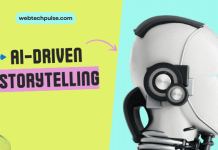It is estimated that roughly 15% of the world’s population have some form of disability, according to The World Bank. With so many lives touched by challenges, it is worth noting how to improve their quality of living. Thankfully, technology has stepped up to deliver them solid assistance. Here are a few stellar examples of how assistive technology has drastically improved the modern web and the world at large.
Accessibility In Web Designs
On average, internet users around the world spend about 144 minutes online each day, according to Digital Marketing.org. With internet users with differing needs, the need for accessibility has prompted a change in how websites are designed. Web designers make use of the Web Content Accessibility Guidelines to check the standard of their sites and ensure that they are accessible to a wide range of users. Using assistive technology like keyboard-only navigation, audio search prompts, and text-to-audio assistance makes accessible online experiences possible. In today’s world, accessible websites are now considered the norm and not the outliers.
Adaptive Seating
The simple act of seating can be quite formidable for a person with a condition like cerebral palsy. The experts at Cerebral Palsy Network say that the families of a non-ambulatory child frequently face a challenge with finding seating that offers the appropriate level of comfort and support. Thankfully, the challenge has eased with the development of adaptive seating. A study conducted by researchers from Mahidol University in Thailand found that through adaptive seating technology, children with cerebral palsy had remarkably improved posture control, social activity, and confidence.
Digitally Enabled Remote Services
The development of smart speakers and AI Assistants is changing how certain services can now be conducted and received by individuals with disabilities. Enable Ireland emphasizes that assistive technology in the form of digitally enabled remote services is changing how services like grocery deliveries and even emergency health services can be accessed in remote areas. Siobhan Long, the manager for assistive technology of Enable Ireland, says that digitally enabled remote services also help create stronger social ties for those with disabilities. Gone are the days when socializing is restricted by immobility: technology has made it all possible.
The fascinating thing about technology is that it is on an ever-forward march – so the benefits that are presently enjoyed by those with disabilities will only grow with time. The future of assistive technology remains bright, and retains the continuous goal of improving the overall quality of living for those that live life with disabilities.












